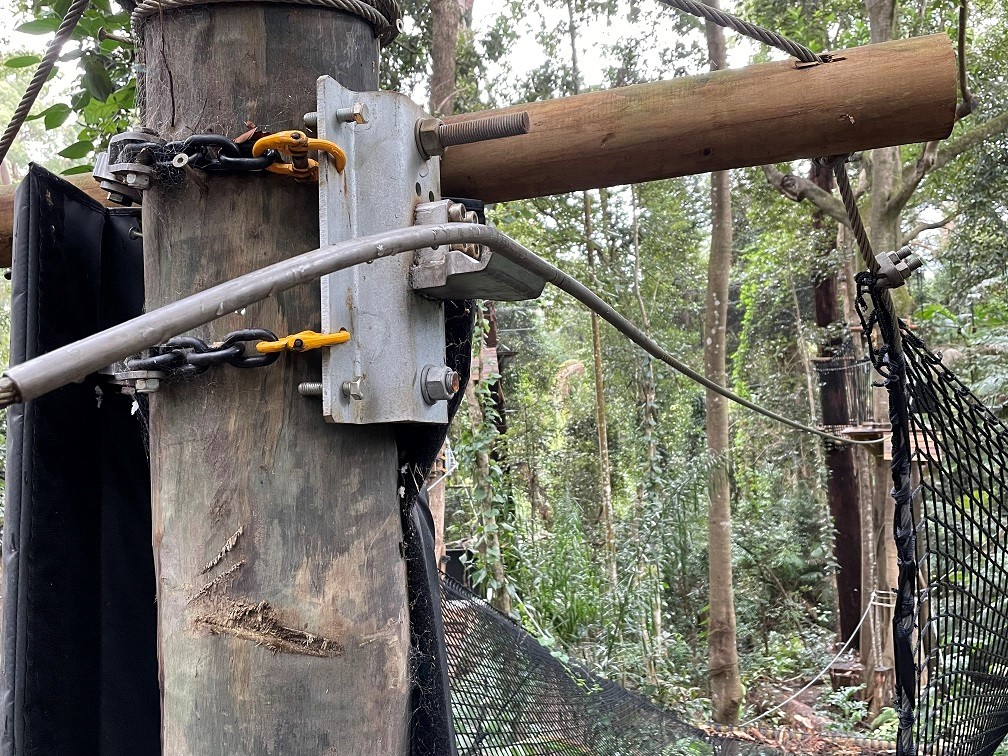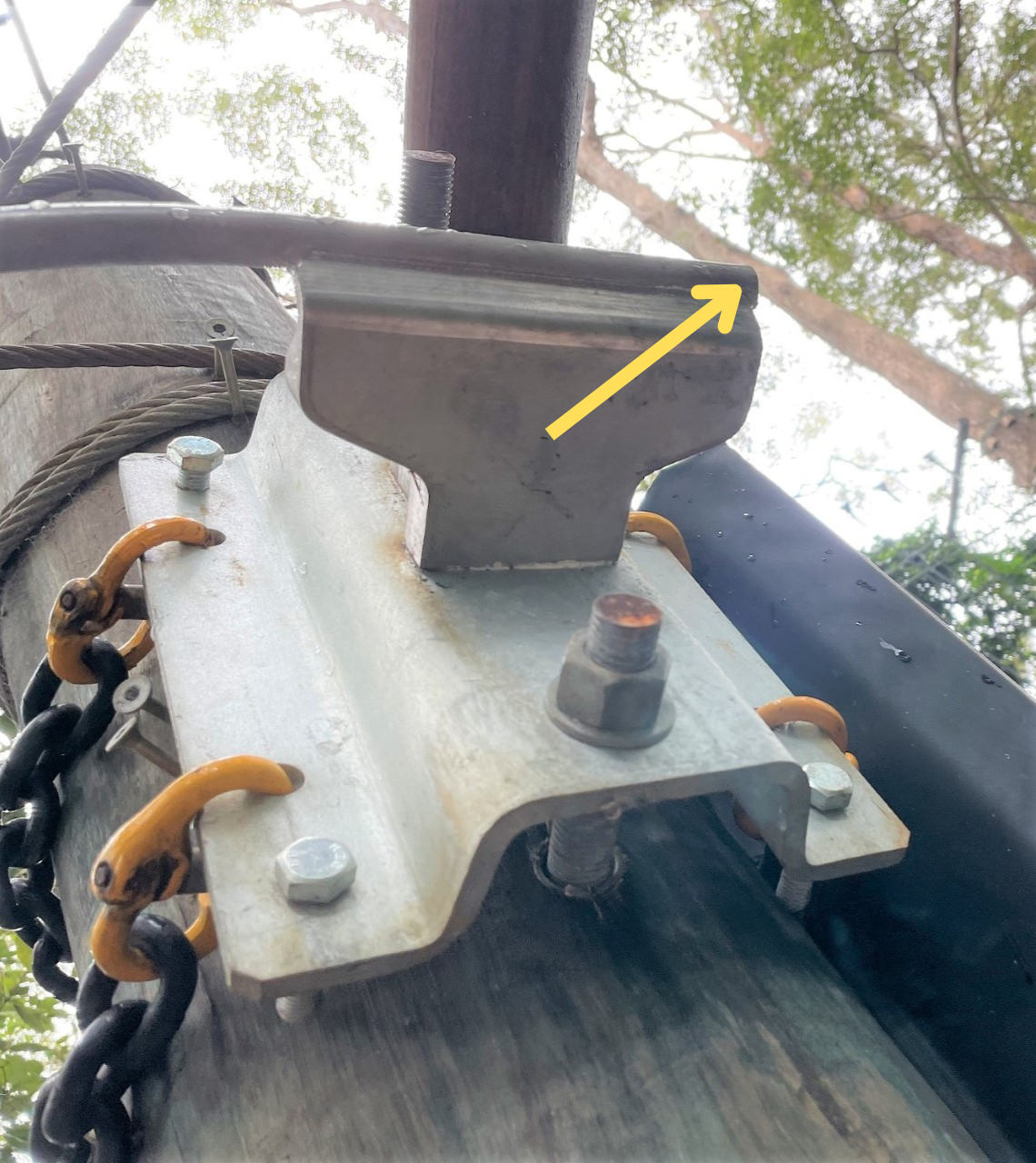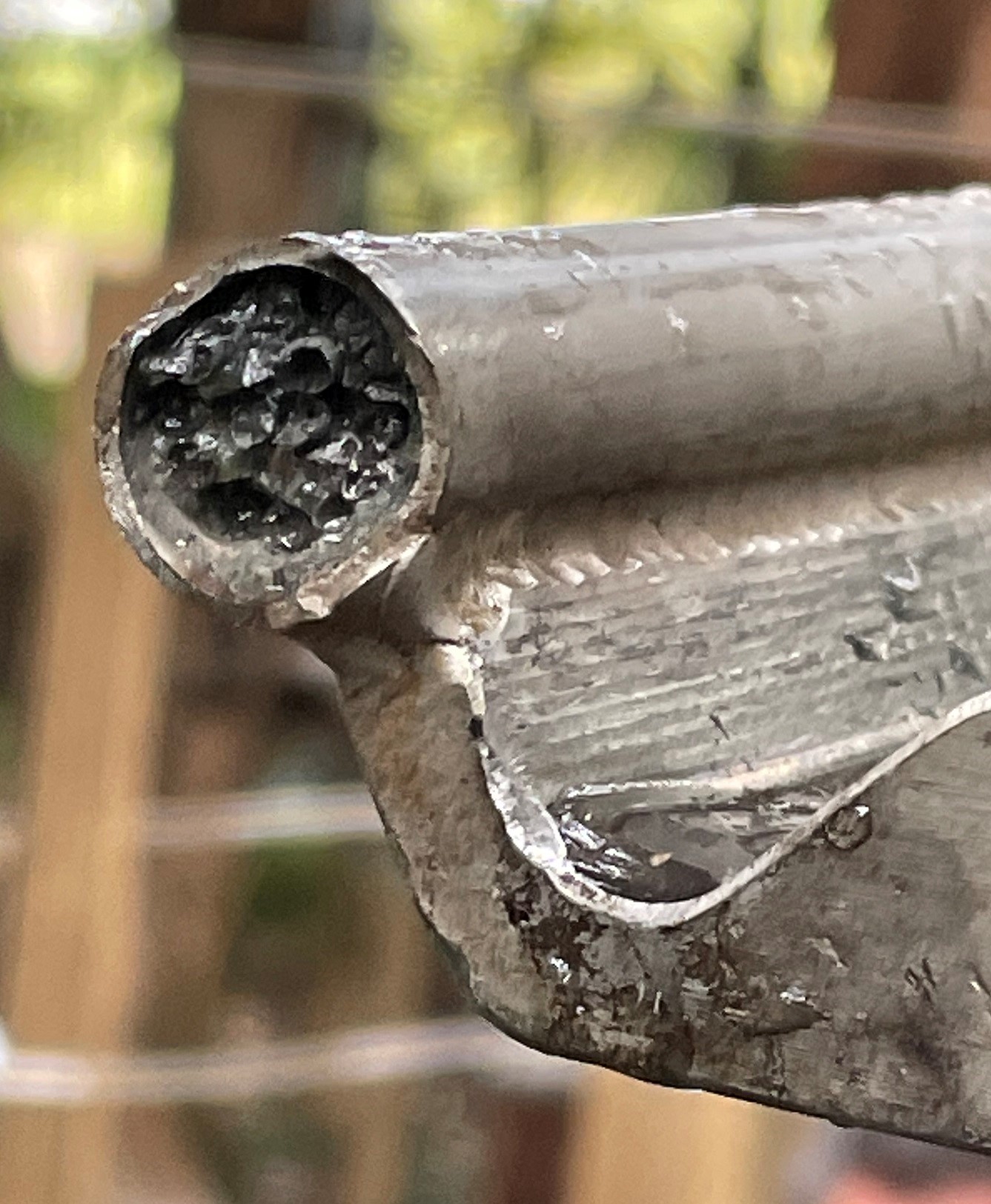Zip line anchorage failure
Issued: 29/08/2022
Last Updated: 21/12/2022
Purpose
This safety alert highlights the recent failure of a zip line anchor (termination). The information applies to a specific type of zip line anchorage system.
This is the second failure of a zip line in Queensland. In 2019, a zip line termination, consisting of four wire rope grips (bull-dog grips), failed because the grips had not been tightened enough and the wire rope was able to slip when two patrons were on the zip line. This previous incident resulted in a fatality and serious injuries to the other patron.
Background
The high ropes course (the course) involved in the second incident had been installed at the workplace in 2021. The course used a system of wire rope and anchors that allowed patrons to travel throughout the length of the course without having to unclip and reclip to separate wire ropes. To achieve this, it utilised a unique system to anchor the wire rope along the course.
The anchor that failed consisted of a 12 mm diameter galvanised steel wire rope fixed inside a stainless-steel tube using epoxy resin. The tube was welded to a bracket that was bolted to a mounting plate. The mounting plate allowed the entire assembly to be attached to a timber post or tree. This complete anchor assembly, as originally designed and installed, was rigid without the ability to move or rotate. Figure 1 shows a representative anchor on the course.
Prior to the incident, another anchor of the same type within the course had exhibited cracking of the stainless-steel tube. A competent person was consulted, visited the facility to inspect the cracking, and holes were drilled in an attempt to prevent further crack growth.
At the time of the incident, the patron was reported to have been travelling down the zip line when the anchor at the lower end of the zip line failed, resulting in the patron falling up to 7 metres to the ground.
After the incident, inspections by WHSQ showed that both the tube and wire rope had failed at the toe of the weld between the front edge of the bracket and the tube (refer Figures 2 and 3), where the cracking had been identified. In addition, WHSQ observed cracking of the stainless-steel tube on the lower end anchors of the other zip line sections of the course.
Contributing factors
The reasons why the failure occurred are being investigated and are likely to be complex due to the varying loads experienced at the anchor, and the various components and their assembly.
Action required
Zip lines of a similar design
All high ropes courses with a similar design to the one associated with this incident (i.e., with rigid anchors consisting of a wire rope passing inside a tube) should be removed from service and thoroughly inspected by a competent person.
Considerations by zip line designers
- When new designs for anchoring systems are developed, designers need to thoroughly consider the effects of all loading conditions on the components. The choice of connection used can significantly impact the loading experienced by the components. In addition, changes in geometry can significantly impact localised stress concentrations and reduce fatigue strength.
Fixed connections involving changes in geometry combined with various materials can make it difficult to determine the maximum localised stresses that are likely to be experienced throughout the component. This in turn can make it difficult to determine whether these stresses are likely to induce a failure of the component.
As such, new designs need to undergo thorough analysis for all potential failure modes to ensure that the design is safe. This should consider operational and environmental factors (wind, temperature, atmospheric corrosion, cyclic loading, etc.), all operational and environmental loads, and any damage that is likely to occur during operation.
- Designers also need to ensure that adequate inspections can be undertaken on their zip line system, especially for areas with higher localised stress. Designs where the highly stressed areas of a critical component cannot be thoroughly inspected increase the risk of an unexpected failure and should be avoided if possible.
- Designers need to ensure adequate safety factors are applied to all calculations (for more information refer to WHSQ guidance Alert, Zip line terminations).
- Designers need to consider the impact of manufacturing and assembly techniques on the properties of the materials used (e.g., welds that may induce increased brittleness, decreased yield strength, tensile strength, and impact toughness).
- Caution should be shown when developing new designs of zip line anchor. Designers need to carry out extensive research, development and testing to ensure their zip line system provides an adequate level of safety.
Considerations for manufacturing, installation, and commissioning of zip lines
- The manufacturing, installation, and commissioning processes must ensure that the zip line has been assembled using the components specified by the designer. This includes ensuring that the materials used for components such as wire ropes match the design specifications. This also applies when maintenance and repairs are being undertaken.
Considerations for inspecting zip lines
- When cracks or other defects are found in the life cycle of a zip line, the zip line should be removed from service and a thorough examination of the affected area should be performed. This may require destructive testing where all components cannot be adequately inspected. In addition, a review of the design should be undertaken to determine why the component failed earlier than expected. The zip line should not be returned to service until the reason for the defect has been conclusively determined.
Considerations for owners and operators of zip lines
- Owners and operators of zip lines must use a competent person for the inspections required under the Work Health and Safety Regulations 2011. In addition, appropriate routine inspections should be undertaken to identify any defects in the zip line. If defects are identified, the zip line should be removed from service and a competent person should be engaged.
- Owners and operators should follow all operating and maintenance instructions set out by the zipline designer.
Further information
Further information is provided in:
- Alert: Zip line terminations published by the Office of Industrial Relations on 9/12/2019
- Australian Adventure Activity Good Practice Guides
- AS 2316.2.1:2016 Artificial climbing structures and challenge courses Part 2.1: Flying foxes and challenge ropes courses – Construction and safety requirements (EN 15567-1:2007, MOD)
- AS 2759-2004 Steel wire rope – Use, operation and maintenance
Australian Standards can be obtained by contacting Standards Australia.


